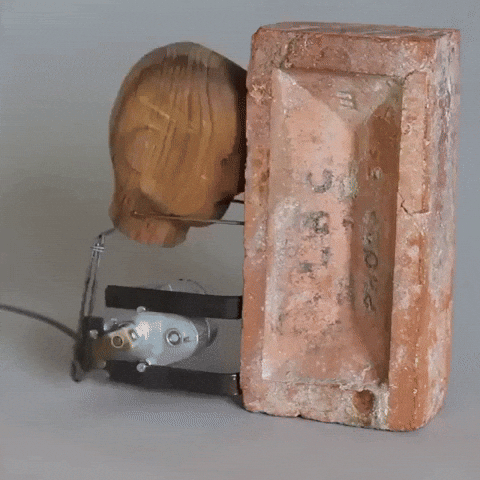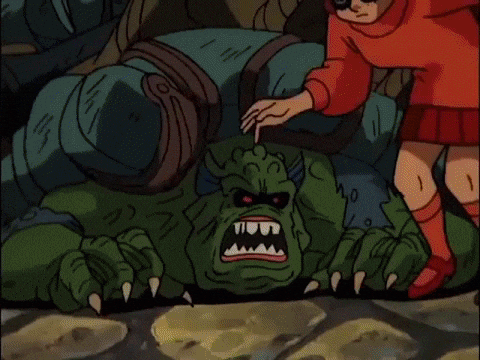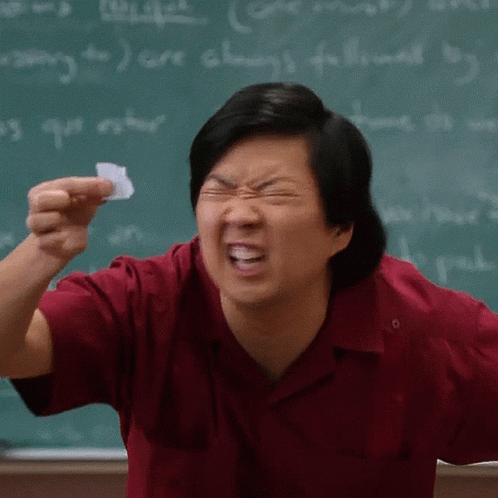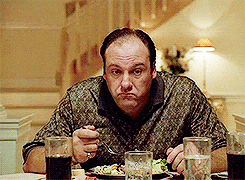I volunteer as tribute
One man’s opinion of the current state of the pickleball industry
This article is long. But you should probably read it if you love pickleball, buy or make paddles, compete or care about how the sport evolves.
I wrote this for myself - because I can understand both the business and the engineering aspects of the issues. I can see that the "emperor has no clothes" and I wanted to explain it to others.
I wrote this for players, who are the lifeblood of the sport - because without them there’s no one to hit the yellow ball - and no-one to buy paddles - and I thought they might care about organisations that are trying to regulate the sport - in the long run that will affect what we can buy in the store and how much it costs.
I wrote this for the paddle nerds/reviewers - because one way or another they make a ton of content to help the general public make sense of the mess that is this industry.
But most of all - I wrote this for pickleball brands. There are many of us and a few (you know who you are) are truly pushing the limits of innovation. And every single one of us is affected in one way or another.
To be clear - absolutely no part of me dislikes competition - far from it - if you can make a better product that people love playing with - more power to you. You deserve to win. All day.
It’s the subterfuge, protectionism, manipulations that I can’t abide by. In the end this is bad for competition and bad for the consumer. And the industry is in a complicated place - because the very organisation that is the most egregious villain in this story - is also one of the largest in the industry.
It’s easy to feel frustrated in a situation like this. You can feel hopeless because you don’t understand exactly what is happening or why it is happening. You can feel hopeless because you don’t feel like there’s another way.
And hope is the entire purpose of this article - because after all, as Cassian famously taught us “Rebellions are built on hope.”

So yes it’s long. But it’s important. Read it in chunks, read it with your friends - but read it, share it, discuss it and ask any questions. Here’s the TLDR before we dive in.
TLDR
- UPA wants to control the pickleball industry and to do so it would need to destroy USAP
- UPA is bullying companies into a new paddle certification (UPA-A certified) which is virtually identical to the USAP standard - except for the price tag.
USAP charges $4500 for LIFE per paddle
UPA-A keeps changing their fee structure but currently wants $61,000 (a big enough number as is) but this fee is also per YEAR* - this is over 27 times more than USAP (assuming a 2 year life cycle for a paddle model) - UPA’s rules are squeezing small and innovative companies - seemingly to protect its revenue stream and its biggest sponsors
- With no explanation or rationale provided UPA decided Reload sheets were no longer approved for professional play. This strikes me as unethical and anti-competitive.
- There is a much better way to do all of this - an independent governing body with a transparent and internationally recognised standard where paddles can be approved and certified in different labs around the world - with no conflict of interest with tournaments, tours and events.
(* yes I know it’s not 61k per paddle for everybody - but the precise breakdown is not that important - because for many small brands who want pro players to use their paddles in UPA tournaments - the 61k total is EXACTLY correct)
Whew. That’s a lot.
So where do we start?. And why is the article called “I volunteer as tribute”?
Because Katniss volunteers for near certain death in the Hunger Games arena to protect her sister by volunteering as tribute
Pickleball isn’t certain death - there is no weapon-filled arena. There are no districts of Panem in abject fear of an authoritarian government. But there are a lot of small pickleball paddle manufacturers - being bullied by a manipulative authoritarian organisation with draconian rules - and they are all scared to speak out.
I don’t know of a single pickleball paddle manufacturer that actually likes the UPA and wants to support their upstart paddle certification system - with the possible exception of some of their sponsors who need protection either from smaller more innovative brands or from independent governing bodies such as USAP which doesn’t take kindly to their rules being ignored. Instead, the brands are being bullied into being a part of the UPA paddle certification system.
I speak to many paddle companies regularly. There is a lot of confusion because the nuances of these rules and the manner in which they are enforced don’t make a lot of sense. And the paddle brands are understandably hesitant - because they worry about repercussions. Many of them are additionally concerned that EVERYONE else is going along with the UPA and they don’t want to stick their neck out. Which is exactly what the UPA wants them to think.
Divide and conquer.
Exactly what the Panem government did to the districts in Hunger games.
But UPA already banned Reload. And I’ve got nothing to lose, but maybe an industry to help save.
And so:
I volunteer as tribute.
And NOW we can start ;)
Pickleball is at a crossroads
Fastest growing sport in the USA year on year.
The noises and positive signals are deafening.
If you’re not already playing it - you know someone who is and you really want to try.
And if you are already playing it - well then pretty soon you’ll become addicted to it - and that means you’ll start spending more and more time on the courts. This sport is bringing people together like no other sport before it.
Asian countries are rapidly discovering the sport - Europe is no slouch either - holding its 2nd European Championship mid September in Rome.
This is great - everybody’s active, it’s an incredibly social sport, great for cardiovascular fitness, all ages can get involved. There are even 3 (yes 3) professional pickleball leagues (PPA, MLP and APP)
So what’s the problem? These are all good things, right?
Right?

No. They're not good things
Greed is the problem.
This happens in many sports but this one’s mine and so I have a front row seat to what’s unfolding.
To understand what’s happening we have to go back in time a bit.
Although pickleball has been played for over half a century it wasn’t until 20 years ago that the sports’ main governing body - USAP (the United States Association of Pickleball) was formed.
Though it evolved over the years in various ways - it was and remains the steward of the sport and the only internationally recognised governing body for Rules, Referees and Equipment.
In fact let’s focus on equipment specifically - in 2016 USAP started testing/certifying Paddles and Balls - to make sure there was a level playing field in the sport.
And for 8 years they did all paddle certification and all on-site testing where necessary. They were the only game in town.
And then someone else came along.
But pay attention - there are a lot of twists and turns.

- There were 3 professional leagues as I mentioned before:
APP (Association of Pickleball Professionals) - the very first pro league started - This tour has a different prize money/fee structure to the PPA and doesn’t force players to sign exclusive contracts.
PPA (Professional Pickleball Association) - started by Connor Pardoe and then majority bought out by Tom Dundon. This tour is regarded as having the majority of the best players in the world - focuses on singles and doubles only (gender and mixed)
Players are forced to sign exclusive contracts
MLP (Major League Pickleball) - started by Steve Kuhn - this was an attempt to make a team-based league with multiple franchises in various different cities - along the lines of pro basketball or pro hockey. Celebrity investors rode the pickleball wave (only team based play) expecting a windfall of TV rights, Franchise deals, Ticket sales etc - In February 2024 - after a tumultuous period known as Tour Wars (well documented in the documentary Dreambreakers) MLP and PPA completed their merger to create an entity known as UPA (United Pickleball Associations). Here’s where the plot starts to thicken.
A quick sidenote on Professional pickleball.
Pro players are great players - they’re not like the solid 5.0s at your local challenge court - they rarely miss, they have ultra-fast reflexes etc - so of course at some level it’s inspiring to watch them - but therein lies the rub - Pickleball’s greatest weakness as a pro sport is also its greatest strength. It’s so accessible - you want to play it more than you want to watch it.
It’s a participation sport.
So while the Pro Leagues might have a great vibe and lots of competitive spirit - it is by no means clear that they are a good business model. If you overspend you might not be able to get the money back.
And boy did UPA overspend. So here you’ve got a league (recently merged with a substantial cash injection from well heeled Venture Capitalist partners) with expensive players, lots of tournaments to organise aaaaand - nobody watching ;)
I mean yes sure - there may be a few hundred thousand views of a highlight reel or two on Instagram - but the fee paying spectators and the big streaming deals that were promised to investors - are nowhere to be found.
As I said it’s a participation sport.
Capitalism!
So what’s UPA to do - well they looked around and thought to themselves - wait a minute hang on hang on - who’s making money in pickleball? Oh yes that’s right - those pesky paddle companies.
Landed cost of paddle from China $30
Retail cost of paddles from Premium brand in USA $280

That is a LOT of markup (in fact it’s likely the highest markup of any sport in the world)
But UPA wasn’t in the pickleball paddle business (apart from indirectly since Dundon Capital Partners owned Pickleball Central). So how do they get in on that action?
What to do - what to do?
Right around the time that MLP and PPA merged - a new entity was formed called PPL. (Pickle Pro Labs).
What do THEY do Nick?
Oh I’m glad you asked. At the time of formation they did absolutely nothing - yet they somehow ended up with an exclusive contract to test all paddles at every MLP and PPA event.
That’s a nice trick.
But why do paddles need to get tested - what the hell’s going on here? I thought paddles were certified by the USAP.
Yes and yes.
I told you this was nuanced.
Certification vs. testing
When a brand certifies a paddle with USAP - they supply 8 units of the paddle to USAP and after a battery of tests that paddle is either a PASS or a FAIL.
Assuming a PASS - this means that this paddle model is allowed to carry the USAP Approved symbol that we all know so well.
Let’s think about that really carefully - it means the paddle is ALLOWED TO CARRY THE USAP APPROVED symbol.
But only a small number of even those 8 submitted paddles are actually fully tested.
What happens when the brand that got “Approved” by USAP then makes 10,000 paddles and delivers them to retailers, consumers, pros etc?
Exactly.
USAP relies on a so-called Manufacturer attestation that these 10,000 paddles (and all the ones made in the future) are EXACTLY the same as the ones tested by USAP. And the definition of exactly here is that they stay at or BELOW the performance limits for USAP - tiny changes due to manufacturing tolerances don’t matter.
And surprise surprise - that isn’t always the case.
What could and does happen:
- Too much grit - manufacturer accidentally (bad QC in China) or deliberately makes paddles that are beyond the grit limit for USAP rules
- Too much power - manufacturer accidentally (bad QC in China) or deliberately makes small changes to the construction (e.g. thicker EVA ring in paddle edges) resulting in a much greater trampoline effect/i.e. Higher power
- Paddle broken in - even though a paddle might be within legal limits when manufactured - certain physical characteristics can alter when the paddle starts to wear - affecting its power level. This is also both accidental and deliberate. Some manufacturers even deliberately design their paddles to break down to encourage more frequent purchases
Some players will deliberate crack/break their paddles to give themselves slightly more power.
At the highest levels of the game (in the Pro leagues) matches are frequently won or lost by very slim margins - a few percentage points of performance one way or the other (slightly more power, slightly more spin) can be the difference between winning or losing. As a result the faster the pro game got - the more it became important to have a level playing field.
So while having a paddle that is labelled USAP Approved - is supposed to guarantee that it stays within legal USAP limits throughout its entire usable life - it quickly became clear that due to a combination of sloppy manufacturing and/or intent - this was not possible - so on-site testing started to be implemented.

Ok - so now we (hopefully) understand a bit more about why we need paddle testing at tournaments and we’re back to PPL. Why was PPL formed again?
For testing? Well not really - because USAP was responsible for all on-site testing (as well as of course paddle certification).
The answer is no-one knows.
Well a few people know - the people that were in the room around the end of the MLP/PPA merger - but everyone else just has to guess.
Guessing is pretty easy when they constantly say the quiet part out loud.
Their job (from the very beginning) was to be a part of the master plan to get rid of the competition.
Phase 1: Take over paddle testing at all MLP/PPA events (pros only)
Phase 2: Introduce new paddle certification via UPA-A
Phase 3: Require UPA-A certification for Pro tournaments only
Phase 4: Require UPA-A certification for Amateur events
Phases 1 and 2 have already happened.
Phase 3 kicked in on September 1st.
Phase 4 is presumably a few months out (as evidenced by the inclusion of this wording in Section 3.B.i.1 of the official PPA 2025 player handbook
All paddles used at any PPA event, amateur, professional, or senior professional divisions, must be on the Professional Pickleball Association’s approved equipment list for both amateur and professional divisions.)
As the saying goes - when someone shows you who they are, believe them the first time.

UPA-A Certification - whaat?
As UPA controls or heavily influences a variety of different media outlets (pickleball.com, The Kitchen to name just two) they frequently tell a fun story about their professionalism and their labs and their equipment etc but no matter how many white papers or blog posts I read - to me it seems like a colossal duplication of effort.
Let’s take a look at a real world example - Joola has a range of products that come in two versions
(a) Dual certified (USAP and UPA-A)
(b) UPA-A only
What is the difference between these two paddles?
The answer is LESS THAN THE WIDTH OF A HUMAN HAIR.

This is not a mistake. The two paddles are exactly the same - but the UPA-A version has a 10-15 microns more of grit (because UPA-A does not set grit limits the same way)
So why does UPA-A certification exist? If it’s basically exactly the same as USAP certification - why go through this whole process and hassle of pissing off the entire industry, confusing consumers and retailers - and wasting a lot of engineers’ time creating an alternative standard.
Surely the answer is simple - and sadly always the same - MONEY (and control)
If UPA owns/controls big tournaments that paddle manufacturers deem it valuable to have their paddles be used in - and they ALSO OWN the paddle certification mechanism as well as the on-site testing - you can see where this leads.
As they would say on The Price is right - “What is conflict of interest?”
UPA initially wanted to charge each paddle company 100k USD per year back in November 2024 - but there was a massive pushback to this so they waved some smoke and mirrors around - reframed part of the cost as a marketing fee - and eventually dropped the overall fee first to 75k evenutally to 61k USD per year for small brands. This is an insane and arbitrary amount of money for paddle certification (all the more so because they are waiving a bulk of those fees for big sponsors)
Remember that USAP charges 4.5k USD for LIFE per paddle for the exact same service - so UPA wants 27x more (assuming a paddle model lasts for 24 months)
What could possibly go wrong?
I’m not a lawyer - but I do watch a lot of TV shows. And Suits and Law & Order taught me that there are a lot of laws to protect and promote innovation, entrepreneurship and the competitive spirit that evolves products and industries.
Most specifically the Sherman Act and the Clayton Act which were both created multiple decades ago and exist specifically to prevent monopolistic market manipulation - i.e. to keep markets open and innovative. These laws exist to benefit both markets AND the consumer alike.
You can all do your own Googling and ChatGPT-ing to inform yourself but it is instructive to note that the acts specifically call out such things as:
- Exclusionary Conduct:
Using your authority to exclude competitors unfairly, such as:
Requiring manufacturers to pay exorbitant fees to meet your standards, which smaller companies can’t afford, effectively locking them out of the market and harming participation or innovation.
Arbitrary or discriminatory standard-setting that favors your own equipment or partners.
Forcing tournaments or players to use only your certified equipment, suppressing alternative standards or products.
Does the UPA’s behaviour violate these Acts?
Perhaps one day we might find out.

Last year (approximately November 2024) the new UPA paddle certification price-lists and rules were first announced and a number of smaller (and a few larger brands) freaked out.
The UPA-A had finally revealed its Phase 3 card - and they announced the Palm Springs event in January 2025 would be the first event where Pros must play with a UPA-A approved paddle.
The result was a total mess - Paddle companies didn’t want to be bullied into this kind of egregious pricing. Big sponsors of the UPA rejoiced - but even there the optics weren’t good. Other big brands assumed that big sponsors would be treated differently since the paddle testing/certification was no longer independent.
A few brands even tried to reason with the UPA - but they were not to be reasoned with. Manipulations and misinformation ran rampant - originally everyone was supposed to pay 75k per company to be included in any PPA tournament - but they quickly realised that forcing everyone to do this with 7 days notice over Christmas 2024 was a step too far - so they allowed people to just pay 2k upfront - with the rest to come due on some future date (originally May, then July - and now presumably September 2025)
Many big brands didn’t want to rock the boat too much - and they figured - what’s 2k anyway - let’s just pay it - this will figure itself out.
And here we are…a few months later - it hasn’t figured itself out. The confusion is still in full effect. September 1st 2025 just passed and players have no idea what paddle they can play with and why.

Needless to say the situations (as well as the conflicts of interest) are only getting more convoluted - UPA recently announced a new partnership with yet another mysterious group entitled GNG Enterprises - to supposedly implement on-site tournament Go-No-Go deflection testing for Paddles.
There is no indication of what this machine actually does - or how relevant the data is given modern paddle construction that specifically designs AROUND deflection testing - but guess what - the UPA thinks the mysterious GNG enterprises is an amazingly innovative new company except
- It’s never done anything before
- It belongs to the reality show star girlfriend of the founder of….(drumroll)....PPL
It’s all right there in the open.
What happens to Reload in all this?
Reload was created to solve a pervasive and annoying problem - I kept needing to buy new paddles over and over again because the grit wore out so fast. Two years worth of R&D later - removable grit sheets were born. This was and still remains extremely exciting to me - because it can alter the entire sport and industry for everybody.
It’s not just better performance.
It’s not just better value.
It’s not just better for the environment.
It’s all 3 of those things.

We filed multiple patents (received one big one so far - many others to come) - and we created a unique new brand that challenges the uniformity of the entire industry. Pretty much EVERY big brand came to us to discuss licensing. While very few brands (with some notable exceptions) employ talented engineers - it doesn’t take a talented engineer to realise that grit wears out super fast on a pickleball paddle.
They all knew. But selling disposable paddles over and over again makes a bucketload of money.
One of the biggest brands in the sport told us directly that they deliberately design and make paddles that break down super fast (both surface and core) because it will force consumers to make repeat purchases.
Oof.
The money was too good.
We were even told that Reload and the entire possibility of replaceable sheets was an existential threat to key companies’ entire businesses.
So - when UPA announced its new rules banning Reload - I cannot say that I was completely surprised. Annoyed yes. Disappointed maybe. But surprised no.
Lots of corporate interests paying big sponsorship money don’t want a company messing with their meal tickets.
To be clear if you read the UPA rules closely you will not find the words “Reload is illegal” anywhere.
However you will find rule 9.2.A and 9.2.B- that state
- 9.2.A Paddles shall not be constructed with parts or materials that are designed to be removable
- 9.2.B Paddles with removable pieces, parts, or materials will not pass UPA-A Certification testing
If you look at your own paddle - there are a lot of removable parts. Like overgrips for one. What’s going on here?
A-ha - well they thought of that because immediately below this rule is a list of exceptions ;)
- 9.3 Permitted Customizations:
Tape, Edge guards, Grip Wraps, Overgrip, Weighted tape, Grip inserts, Butt caps
I’ll leave it up to the reader’s creative interpretation to determine what this means.
But let’s just say that PPL suggested I make a permanent NON-REMOVABLE version of a Reload paddle - just to pass the tests. Or to make an amateur only version of the paddle that pros couldn’t use.
No thanks.
I stand for innovation and fairness - and I want no part of it.
I have no direct evidence that UPA made the decision to ban Reload because big paddle corporate sponsors asked them to - but the circumstantial evidence is … significant.
And calling out the bullshit in this particular matter is only a small part of the reason for this article. I’m talking about everything else I discussed above also.
- The egregious pricing and the ridiculous justifications thereof.
- The unscientific processes applied to testing masquerading as hard science.
- The endless PR spin required to dull the public into accepting this as normal.
- The manipulations and corporate gaslighting.
- The treatment of professional players.
I think if UPA continues on the path that they have clearly both described and enacted - it threatens to destroy the sport of pickleball as we know it.
And you can see from the latest release of the UPA-A approved paddle list that a number of notable large brands aswell as a few popular smaller ones are thinking the same way.
So what can be done?
I wrote this article because just as democracy dies in the darkness - so do competitive markets and free enterprise.
Nothing written here is a secret. Many top executives at the top paddle companies know all of this very well. Many were present in the same conversations I was in.
Although every opinion stated above is mine and mine alone - I’m not the only one that thinks this. Many small brands will end up being forced to abandon the UPA - and this is precisely what the UPA (and even some of its big sponsors) want.
But nobody wants to say anything out loud - resulting in a lack of information and a surplus of uncertainty.
Well - I got fed up with not saying anything - so y’all get an article.
For now we’ll see what happens next - but the questions I raised need to be raised over and over again.

Will UPA push the payment deadline again?
Will paddle companies just pay $73k or simply walk away from the UPA?
Will UPA have to face an anti-trust lawsuit?
As I said at the beginning - there is a much much better way to do all of this.
I’m not saying USAP is perfect - but they are trying to evolve in response to market needs - and they most closely resemble what this sport and this industry needs to continue being fair, equitable and innovative.
- Independent not-for-profit governance that isn’t easily influenced by financial goals and is vital for Olympic aspirations.
- Internationally recognised governing body that sets and manages all test standards.
- An industry manufacturers association to help develop testing standards alongside the governing body.
- Multiple labs (internationally) qualified to certify equipment.
- Sensible on-location testing driven by fundamental engineering principles.
The USAP doesn’t tick every single one of those boxes today - but it comes a hell of a lot way closer than the money grab of the UPA.
And I believe it can and will get there.
For those of you reading this that are paddle manufacturers - think carefully which side of history you want to be on - and what kind of future you are creating for our sport. Some manufacturers have already chosen to step away from UPA entirely.
For the players- educate yourself and understand what kind of organisation you are supporting. Yes we know that y’all just want to play pickleball and really want all this standards bickering to go away - we do too - but think about this stuff the next time you buy a paddle or go to a tournament. Vote with your dollars.
And as for Katniss and volunteering as tribute.
We all know life isn’t a movie - most of the time.
But once in while, when the stars align and you squint your eyes just so - it is.
And in that particular movie - Katniss wins.



